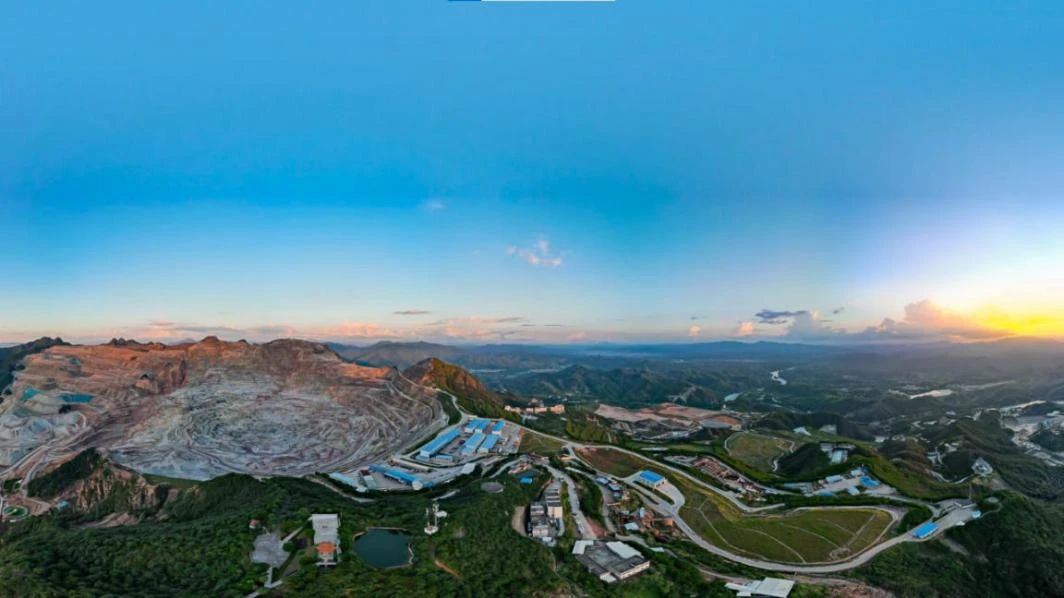
Mar 30, 2022
Interim President Mamady Doumbouya, who came to power in a military coup in September 2021, initially encouraged Rio Tinto to work with the China-backed Win Alliance to develop Simandou.
But his military junta said late Thursday, March 10, that the operation should stop, citing a lack of progress in talks between the two sides.
The junta said in a statement that Doumbouya had seen no progress in this regard, despite discussions with Jakob Stausholm, Rio's president, in December 2021.
At a December 9 meeting of Cabinet ministers, Guinea asked The Alliance and Rio tinto to explore a mutual financial solution for simandou iron ore infrastructure (railway and Moribaya port).


"Therefore (Doumbouya) has ordered a halt to all activities pending answers to questions and clarification of its operating model in the interests of Guinea," Government spokesman Ousmane Gaoual Diallo said in a statement.
Simandou is owned by Rio tinto and a Chinese-backed consortium. Simandou has been in limbo for years because of ownership disputes and the complexity and cost of transporting ore to the seaport.
On Friday, Rio tinto said it would not make any public comment on Guinea's move at this stage.
Simandou is located in La Region de NZEREKORE, a forested region of Guinea. Simandou is hailed by the international mining industry as "the world's largest undeveloped iron ore deposit with the highest quality". Known as the "miracle of location," Guinea has about 20 billion tons of iron ore reserves, half of which, about 10 billion tons, is located at Simandou.
Simandou is one of the most accessible iron ore deposits outside Australia's Pilbara region and Brazil, with 66%-68% grade iron ore. The mine is expected to export 100m tonnes of iron ore a year if it runs at full capacity. Simandou itself would become the world's fifth-largest producer, behind Fortescue Metals, Vale and BHP Billiton.
Simandou is divided into four Blocs, Block 1, Block 2, Block 3 and Block 4. The four blocks have accumulated more than 10bn tonnes of potential iron ore reserves. The average grade is over 60%.
siman块1和2dou are controlled by the Chinese-backed SMB Winning Consortium. About 45 per cent of Simandou blocks 3 and 4 are owned by Rio, 40 per cent by Chinalco and 15 per cent by the Guinean government.
Simandou is vital to China. Bold Baatar, president of Rio's copper business, described the project as "the Rolls-Royce of iron ore". The project is seen as an opportunity for China to wean itself off its dependence on Australian iron ore.
A dispute over transportation rights
Guinea has said any mine developer would have to build a railway across the country, even though it would add huge costs and the route from neighbouring Liberia to the port would be much shorter.
In November 2019, We won the mining rights of Block 1 and Block 2 of Simandou Iron Mine. In November 2020, the Alliance and the Government of Guinea formally signed the basic Convention, the Port Convention and the Railway Convention, which were adopted by the Parliament. The project plans to build a 650km (404-mile) railway linking Simandou to the port and a large new deep-water port at Matakong on the Atlantic coast, about 50km south of the capital Conakry. The deepwater port will be able to accommodate 400,000 tons of bulk carriers.
On March 19, 2021, a groundbreaking ceremony was held for the early construction of the Simandu Railway Kindia Tunnel. The 11.6km Guindia Tunnel, along with the 9km Mamu Tunnel under construction, is an important control project of simandou Railway and will be the longest railway tunnel in Guinea and west Africa. The tunnel project was undertaken by the 18th Bureau of China Railway Construction.
It is understood that the railway of Simandou Iron Mine project is 555.53 kilometers long, which is the first railway running through Guinea from east to west. It is also an important supporting project for the development of Simandou No.1 and No.2 ore blocks in Guinea. Once completed, the railway will become an important transportation channel for Guinea's iron ore export, which will drive the economic development of Guinea in a larger scope.
“这是一个大胆的举动,Doumbouya能来back to bite him," Eric Humphery-Smith, senior Africa analyst at risk intelligence firm Verisk Maplecroft, said in a report. "This is the culmination of months of debate that has now come to the surface and boiled over."
According to Humphery-Smith, Guinea's decision to suspend all Simandou's activities mainly reflects a "power struggle" between the Win Alliance and the Guinean authorities, who made proposals on rail and port infrastructure in December 2021.
High Power Exploration (HPX), a Canadian mining company controlled by billionaire Robert Friedland, faces similar transport problems that it hopes to solve by entering a railway in Liberia, To develop its Nimba iron ore project.
HPX estimates it will cost nearly $2.8 billion to develop Nimba, of which $600 million will be spent on developing other railways and ports in Liberia. HPX aims for its first production in 2027 and hopes to eventually extract about 450 million tonnes. This requires the ability to use a rail link to Liberia's Buchanan port, as it is much more difficult to transport supplies to terminals in Guinea and Ivory Coast.